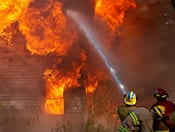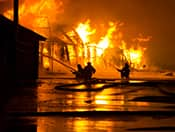Points to Remember Under the Reinstatement Value Clause
Before you purchase a fire insurance policy with a reinstatement value clause, go through the following features and provisions of the clause to know what and how will you be paid:
- The reinstatement value clause is applicable only on fixed assets, such as the building, plant & machinery, furniture, fittings, etc. which are in new condition. However, it does not apply to stocks on the property or in transit.
- The sum insured of the fire insurance policy depends on the reinstatement or replacement value of the damaged property or asset.
- You can make a reinstatement value claim only if the damaged property or asset has been repaired or replaced.
- The insurance company will determine a claim under your fire insurance policy on indemnity or market value basis unless the damaged asset is not replaced. Under the market value clause, the insurance company pays the claim amount after deducting the depreciating value of the damaged asset or property.
- The damaged asset must be replaced by the policyholder within 12 months of the actual date of damage or loss of the asset. In case you are unable to reinstate the damaged asset within 12 months, you can request the insurance company for an extension of time. If the extension is granted, you should ensure to reinstate the asset with the extended time period. If you are unable to replace the damaged asset within the specified time-frame, then the insurance company will indemnify the claim on a market value basis.
- The insurance company will not be liable to pay the replacement cost of the damaged property or asset under the reinstatement value clause if you do not inform them about your intention to reinstate the damaged asset within six months from the date of damage or destruction. In case an extended time period is granted by the insurer, you must inform him about the asset replacement within that time period. If you fail to do so, your insurer will settle the claims on market value or indemnity basis.
- The reinstatement clause can be applied using the pro-rata method by comparing the reinstatement cost of the whole property against the sum insured of your fire insurance policy.
- The damaged property or asset can be replaced at an alternate location as per your preference, provided it does not increase the liability of the insurance provider under your fire insurance policy.
Reinstatement Clause vs Average Value Clause
The Reinstatement Value Clause applies to policies based on the replacement or repair cost of the property, ignoring depreciation. In contrast, the Average Clause applies to policies based on the property's market value, which includes depreciation.
In a Nutshell
Reinstatement value clause is one of the methods through which insurance companies settle claim under a fire insurance policy. While it is available for only fixed assets, it provides the full value of replacing the damaged property or asset without calculating its depreciation. However, you need to be mindful about the provisions of a reinstatement value clause. Only when these provisions are met, you will be able to make a reinstatement value claim under your fire insurance policy.


























 Expert advice made easy
Expert advice made easy


